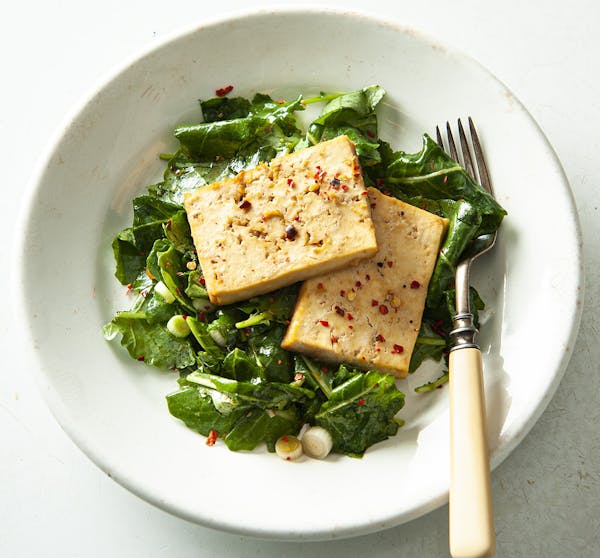Tofu is an ancient ingredient that's beautifully suited to our contemporary kitchens. Like hand-pulled mozzarella, tofu is one of those timeless and traditional foods crafted from the simplest ingredients.
Tofu originated in China about 2,000 years ago and traveled west through Europe with the spice traders. It may have come to America with Benjamin Franklin, who wrote of tofu's virtues in his letters from London to Philadelphia. It's far more than a mere vegetarian substitute for meat. Its neutral flavor takes beautifully to the bold, warming spices and strong condiments we crave in this season's cold weather.
Block tofu, packaged in water, and sold in plastic tubs in the refrigerated section of most grocery stores, is made from mature, white soybean milk that has been curdled and pressed like cheese. This style of tofu is not to be confused with silken tofu, which is made from uncurdled soy milk that has not been pressed. (Silken tofu, often packaged to be shelf-stable, is soft and pillowy and just too delicate for frying or roasting, better suited to soups or desserts.)
Block tofu has been pressed to different degrees of firmness — soft, medium, firm and extra firm. The longer the tofu is pressed, the firmer the block will be. Extra-firm block tofu is dense and chewy and will hold its shape when fried, sautéed or roasted.
Block tofu has a high water content, so the first step is to remove the excess liquid and dry it out a bit. Cut the tofu block into slices to lay out flat on a cutting board or baking sheet lined with paper towels and press them down with a weighted baking sheet or heavy cutting board for about 10 to 20 minutes while doing other things.
Though some recipes suggest marinating the tofu before cooking, I prefer to baste or glaze the tofu as it cooks. Marinating tends to make the tofu too wet and prevent browning and crisping. Use the glaze or sauce to finish the tofu and season accompaniments such as roasted or stir-fried vegetables, salads, rice, etc.
Baked tofu is terrific served with vegetables, over rice or noodles, crumbled into scrambles, tossed on pizza, or rolled into tacos. Plan on adding a few extra slices to store in a covered container in the refrigerator for tomorrow's lunch.
Beth Dooley is the author of "In Winter's Kitchen." Find her at bethdooleyskitchen.com.







